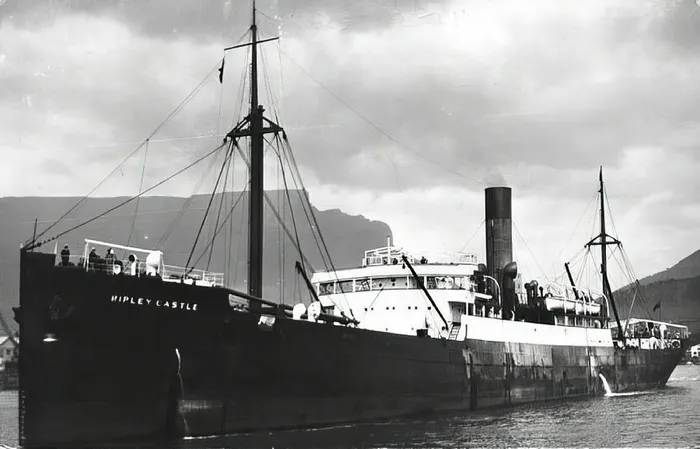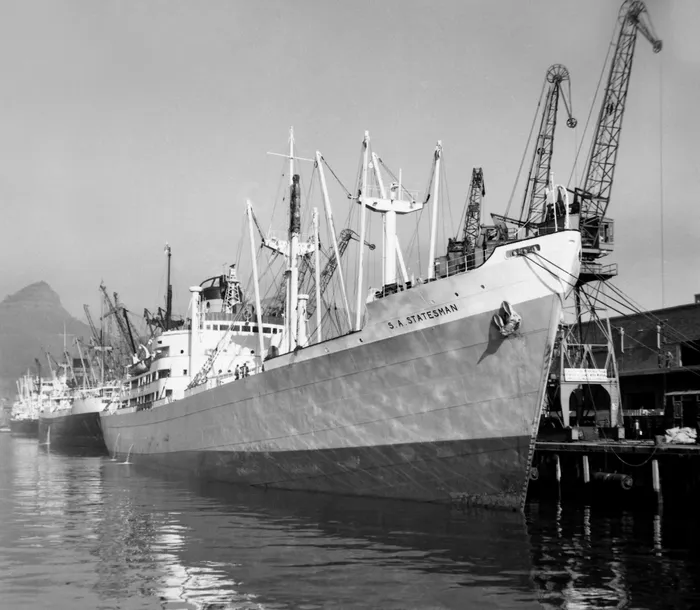Miraculous maritime rescues recalled

The Safmarine mailship SA Vaal (ex-Transvaal Castle). When a passenger fell overboard, the master turned the ship on a reciprocal course – and a miraculous rescue followed.
Image: BRIAN INGPEN COLLECTION
Old newspaper clippings relating to shipping fascinate me. Hence, I was delighted to go through a wad of clippings from several years ago. Some were partial copies of George Young’s inimitable Cape Times shipping pages from yesteryear, crammed with interesting news pieces. Among them I discovered Ships in Port Last Night (aka Harbour Log) – the Cape Times lists of shipping movements in Cape Town harbour, and ships expected within the next week.
They evoked memories of the long school holidays when, as a langbroek, I compiled those lists for George and I had the privilege of accompanying him on his daily trips to the harbour.
Among those clippings was reference to the rescue of a tug crew after their vessel had sunk off East Africa, a story that, in turn, reminded me of other notable rescues.
One of those – in 1926 - involved the legendary Union-Castle commodore, JC Brown when he was the mate aboard the steamer Ripley Castle inward for Cape Town from Boston.

Union-Castle’s cargoship Ripley Castle from which a stoker fell overboard and miraculously was rescued. The ship was built in Japan in 1917 and was bought by Union-Castle in 1919. She was scrapped in 1931.
Image: BRIAN INGPEN-GEORGE YOUNG COLLECTION
A stoker aboard the steamer had sought counsel from Brown, a devout Christian, but he asked the stoker to come later. That night, the stoker began his watch in the stokehold, but when the lad became faint from exhaustion amid the tropical heat, the senior hand sent him on deck for fresh air. In his dizzy state, the stoker fell overboard, but was only missed later in the watch.
After a fruitless search on board, the master turned the ship on a reciprocal course. The stoker related later that, totally exhausted, he saw a ship’s portside light close to him. With his failing strength, he shouted, and minutes later, he saw a lifeboat being lowered. Soon, eager hands pulled the exhausted man aboard.
Years later, in response to a question about his most harrowing experience at sea, Commodore Brown told an inquiring journo of the stoker’s rescue.
“I was conscience-stricken,” said Brown. “He had asked me about making his peace with God. I told him to call later. When I heard he was missing, I felt guilty. He would probably drown without hearing the gospel. I prayed that I could speak to him again, and I posted lookouts.”

An engineer fell overboard from a Norwegian tanker on passage from Europe to the Cape. Following several hours astern, the Safmarine freighter SA Statesman picked up the tanker’s PAN PAN radio call about the man overboard, and the master ordered the crew to keep a lookout for him. Hours later, a rating, working aloft on the derrick sheaves of the freighter, sighted something to starboard. The ship altered course to investigate, but only flotsam greeted the disappointed crew. However, a few minutes later, while the ship was turning to resume her course for Cape Town, another sharp-eyed crewmember - also aloft - saw the man who was rescued. Had the ship not altered course after the first sighting of an object in the water, the engineer would have drowned. After treatment aboard the freighter, he was transferred to the tanker that, on hearing that the engineer had been rescued, had altered course to rendezvous with the freighter.
Image: BRIAN INGPEN
Brown himself heard a shout from the dark sea, and took command of the lowered lifeboat. “Praying for guidance,” Brown continued, “I steered randomly into the darkness. As I shone my torch, I saw him close to the lifeboat."
Hugh James, an officer aboard the mailship SA Vaal and later a highly respected educationist, told me of a similar rescue when the ship was northbound from Las Palmas. During her morning cabin clean-up, a stewardess reported that a passenger had not slept in his bunk the previous night. When his friends aboard did not know his whereabouts and a search of the ship yielded nothing, the master turned the vessel to retrace her course from the island.
Crew and passengers lined the railings, but, as the hours-long search was proving fruitless, and as the vessel now was running very late, the master decided to resume the voyage to Southampton.
However, to determine the vessel’s exact position, he ordered that she continue to head for the island for the navigation officers to take bearings on the island.
During that extended voyage at full speed through a calm sea towards the island, and despite the noise of the ship’s exhaust fans, an officer and the Bosun stationed on the funnel deck heard a cry. “A moment or two later,” the officer wrote, “the reflection of the sun changed slightly, and we saw him, about one hundred metres off… Had the wind been slightly stronger and the sea choppy, we would not have sighted him.”
About twelve hours after the man had fallen overboard, the rescue-boat crew hauled him from the water – alive!
Here is another miraculous rescue. Sailing single-handedly from Cape Town to Rio de Janeiro, a New Zealander was about 200 nautical miles out when his trimaran capsized in a storm, leaving him clinging to the hull.
Off the usual shipping lane between South Africa and Argentina and with little hope of rescue, he feared for his life in the cold water – and he was wearing only his underpants.
On the Great Circle Route to India from Argentina was an Indian bulk carrier that the yachtie saw, but was too exhausted to raise an arm or to shout. As the bulker’s crew had not seen him, she continued on her course. However, on leaving the bridgewing and heading down the stairway, a cadet saw something to starboard of the ship’s wake. As a swell rose some distance astern, he saw the upturned yacht. He raised the alarm, the ship turned round and, with great difficulty amid the heavy swell, rescued the very fortunate yachtsman, suffering from severe hypothermia for which he was treated aboard the bulker.
As the ship was on a non-stop passage to India, the crew gave him clothes and, three weeks later, he disembarked in Kolkuta, eternally grateful for the rescue and for the warm hospitality of his rescuers.
Maritime miracles indeed do happen.
brian@capeports.co.za
Cape Times